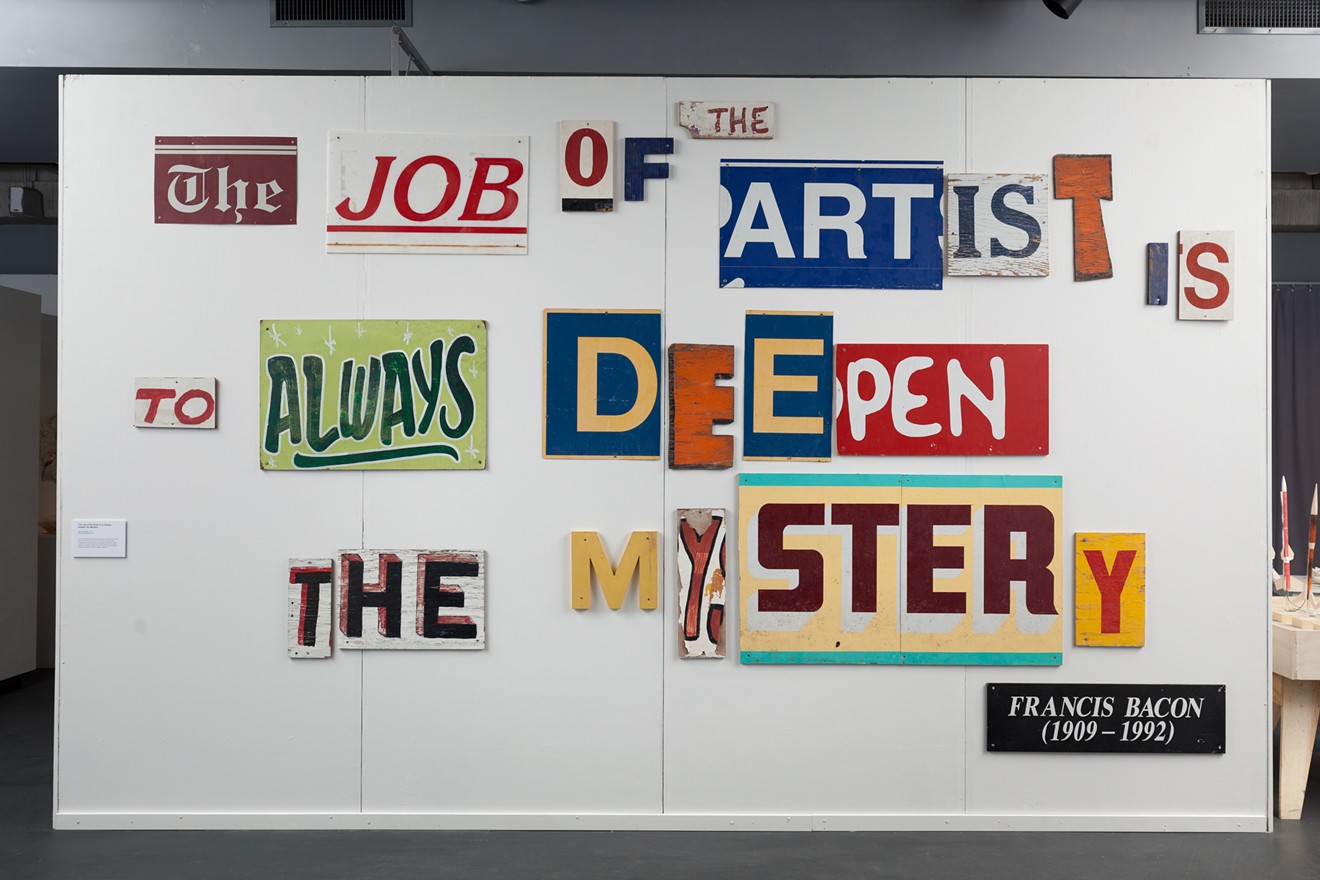“So much art in this genre is grim and didactic and talky,” he says. “I think it should be about starting a conversation. My approach was to provide a safe space for artists to come, present their work and share strategies with the public.” It’s part of an overall shift in exhibition style at the Myhren supported by gallery director Dan Jacobs, who is interested in building shows with lasting impact, that encourage ongoing public conversations once viewers step outside the room and into the world.
Keith uses a few methods to divest Storm Warning of those preachy overtones. First, he does away with the kind of artspeak that can lead an audience down a rabbit hole, moving viewers one step closer to the work on hand: He forgoes artist statements, thereby freeing up the artists to dive into their works without the stress of also having to explain them.
“I’m an artist, and I know,” he explains. “We hate them. We end up lying.” Instead, Keith has provided minimal and straightforwardly explanatory labeling to each segment of the exhibit, which is divided into five thematic groups within the overarching framework: Strategic Beauty, Picking and Choosing, Generosity of Spirit, Humor and Community, and Politically Engaged Art. In another innovative touch, Storm Warning also segues through ambient installations and spaces within the gallery’s compact areas, using sound to expand the viewers’ experience.
Brian House’s science-driven installation “Animas” riffs on political engagement with the presentation of four swaying, wall-hung metal panels, one each of aluminum, iron, copper and lead — all trace metals measured in the Animas River after the 2015 EPA-generated Gold King Mine wastewater spill loosed orange-hued water into its flow. In collaboration with research biologist Dr. Heidi Steltzer, House electronically repurposes scientific data monitoring chemicals in the river to induce eerie vibrations. In another corner, gamelan music provides the spooky background for a video loop of Chris Jordan’s detailed photo “Gastrolith,” showing the garbage-strangled remains of a camel stomach, while Regan Rosburg’s cut-Mylar walk-through sanctuary "The Relentless Memorial" rustles and echoes in the breeze as you circle it, enveloping the piece in sad, elegiac beauty.
Also on the subject of beauty, photographer J. Henry Fair takes a major, but almost misleading step with works from a series he calls Industrial Scars. From afar, Keith points out, they might look like colorful abstract renderings, but close up, with the backstory in place, they are something completely different: in situ helicopter views of chemical waste in natural settings.

Susan Dexter Camp, “The Magnitude of Resistance,”gourds, 2014.
Wes Magyar, courtesy of Vicki Myhren Gallery

J. Henry Fair, “Waste Impoundment at Arctic Iron Mine, Kiruna, Sweden.”
J. Henry Fair, courtesy of Vicki Myhren Gallery
The symposium “On Balance: Art, Science and Politics in the 21st Century," includes artists, academics and scientists Susan Camp, J. Henry Fair, Gregory Heming, Dr. Phaedra Pezzullo and Dr. Heidi Steltzer in a series of lectures and panels from 11 a.m. to 5 p.m. Thursday, April 13, at the Lindsay Auditorium, Sturm Hall, on the DU campus. Admission is free. Learn more about Storm Warning online.















